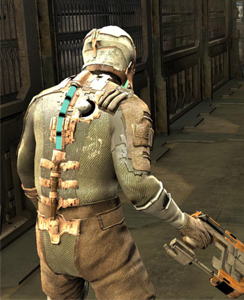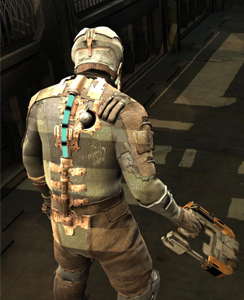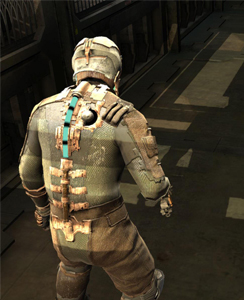The Problem With Porting Games
August 18, 2009 | 07:10
Companies: #bit-tech #microsoft #nintendo #sony

Graphics settings
As multi-platform games are usually developed primarily for a console, you might think that this would make it harder to include advanced graphics options in the menu of the PC version, but Dead Space has settings for Shader Quality, Shadows and post-processing effects. Is it hard to have these sorts of options in the PC version?Apparently not. Dead Space's producer, Chuck Beaver, explained that the developers need access to all of those controls in the debug menu anyway, as they need to be able to tweak the game's graphics optimally for each platform. As such, the advanced graphics menus are just a user-friendly front end for the debug controls used by the developers.
The bigger issue with graphics settings on the PC is deciding which settings to expose to gamers. You not only need the game to look good on high-spec PCs, but you also need to decide how far you're willing to sacrifice your game's appearance on low-spec PCs. For a multi-platform game to work well on all systems, these decisions have to be made early on in the development process.
Each system has its own quirks and flaws, and you need to allow for these when developing the game. Beaver offers the example of the PS3. “The PS3 doesn't have a great fill rate, so you can't fill up the screen with v-effects, whereas the Xbox 360 can handle that. You have to design the core game with the PS3 in mind in that case, and then if the Xbox 360 is weak in another area then you have to design to that,” he explains.
Are there any areas where the PC is weak? “Generally not,” says Beaver, “because there's no actual spec.” Consoles have the distinct advantage of a fixed architecture. Developers know the exact specification of each console when they start programming the game, and they also know what the exact specification of the console will be in the years to come. Conversely, with the PC, you have to not only cover various specifications, but also predict what specifications people will be using at the point that your game is released. “That's really the biggest challenge with the PC,” says Bozz. “It's very difficult to cover all of the options that consumers have.”



Dead Space allows a lot of control over graphics features such as the shadow effects (pictured going from low to medium to high, left to right) - this ensures that a wide range of PCs will be able to play the game
According to Bozz, the team at Visceral will compile a “must-have” list, a “would-like-to-have” list and a “would-be-great-but-we-don't-think-we-can-have” list of features they want to put into the game. “Once you've drawn up your lists,” says Bozz, “you can start looking at CPU performance, how much RAM you need and so on, and evaluate every feature based on those criteria. So you can say one feature will need five per cent of a single-core CPU's resources, and five per cent of a good GPU's resources, and once we've done that we prioritise that list based on what we feel is the best experience for the user.”
The user experience is key here, as a decent multi-platform game has to be consistently good-looking and playable on every platform, whatever sacrifices have been made. “One of the problems that we run into with lower-end PCs is that we could certainly have the game run on them, but it's not going to be a good user experience,” points out Bozz. “We're very concerned about making sure that users have a consistent experience across any platform, be it a PS3, 360 or PC. That's difficult, because it dictates your market – you have to come up with a minimum spec and that's all you can work with.”
The same also goes for high-end PC hardware, and developers have to strike a balance between how good they want a game to look, and how many people will be able to run the game at the best settings. Budget restrictions also come into play here, particularly when it comes to adding support for hardware-specific features such as GPU PhysX acceleration, or even multi-GPU support.
That said, implementing multi-GPU support is apparently a pretty simple job in games. “It's generally invisible to us,” says Bozz, “and the way that Nvidia and ATI implement their APIs makes it pretty easy for us to do stuff like that.” However, it becomes more complicated when you add more than two GPUs, because you're going into territory where only a handful of people will have the hardware. “We have to consider how many users out there have that kind of capability,” says Bozz, “I'd love to make a Quad SLI version of Dead Space, but how many extra units would I sell?”
The problem for multi-platform game developers making PC games is that at some point you have to say “stop” when it comes to extra hardware features. You can always add higher-resolution options in the PC game, but you begin to upset the guys in control of the game's budget if you start putting serious man hours into developing graphics features that are only available to a small number of PC gamers, let alone console gamers. “I know people are going to read this and say, god that guy's telling us that we've bought all this hardware for nothing,” says Bozz, “but the reality is that as much as I'd like to support this stuff, I can't do that at the expense of the other 98 per cent of gamers.”
A very common bugbear for PC gamers is that they feel that the graphics in a PC version of a game have been compromised, simply because the consoles wouldn't be able to handle the same level of graphics. However, Red Faction: Guerilla's system architect Dave Baranec disputes this, and says that in fact “we usually find it's the opposite”.
Part of the problem is that multi-platform games are usually developed primarily for consoles, which means that they're heavily optimised for those architectures. Baranec explains that “content targets, system design and overall structure tend to be tailored towards what the consoles do best. It isn't uncommon to find that even high-end PCs have a hard time holding up against the sorts of deep optimisations you can make on fixed hardware.” However, he also concedes that “the situation could certainly be reversed – you could build a game that caters to the strengths of PCs, and find huge problems trying to get it to run on a console”.

MSI MPG Velox 100R Chassis Review
October 14 2021 | 15:04









Want to comment? Please log in.